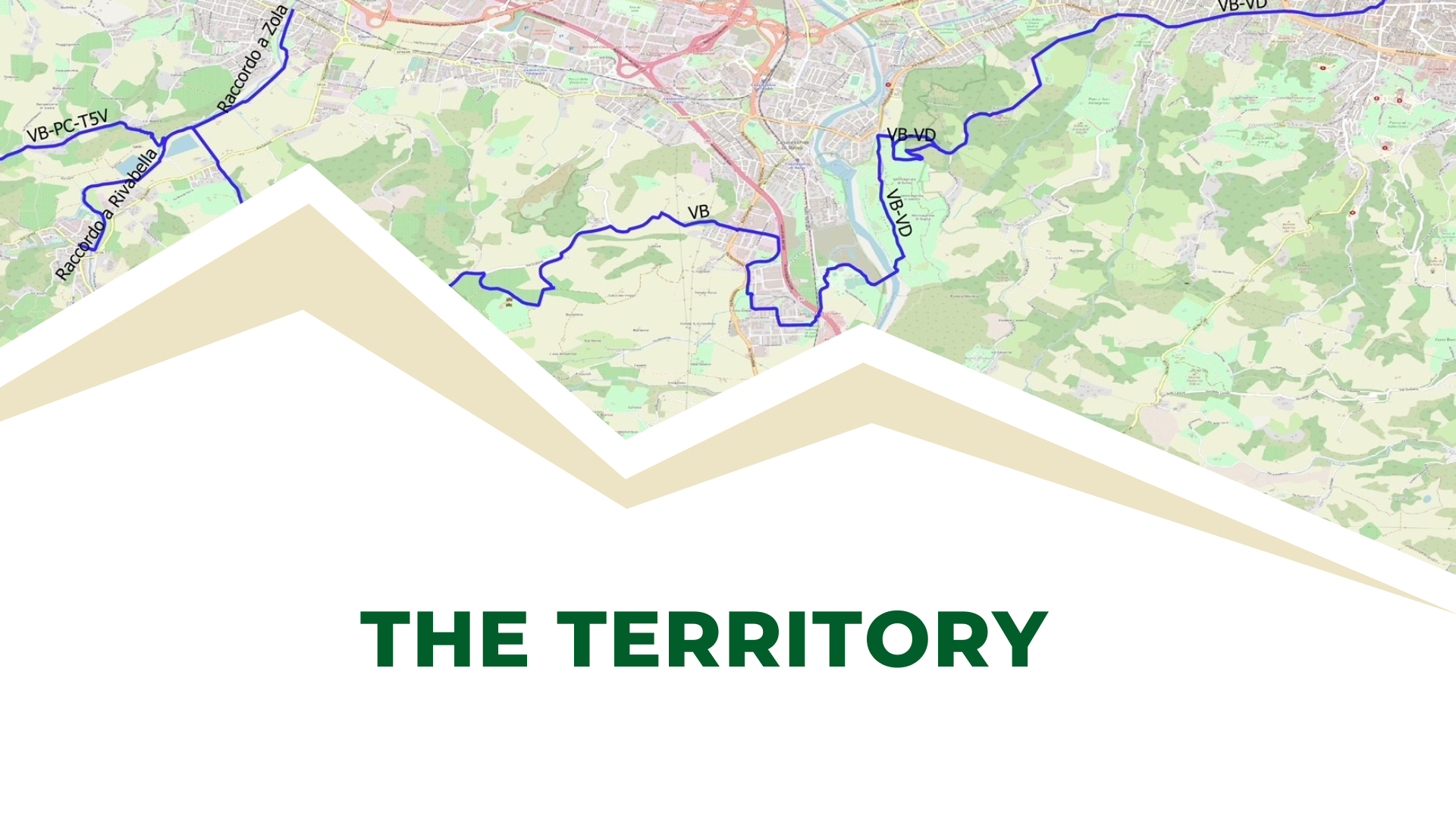
From Bologna to Bazzano: over 50 km from the city to the hills
The Via dei Brentatori is an exceptional opportunity to discover both the history of this ancient guild and the territories it crosses, rich in both history and nature.
The journey begins in the historic center of Bologna, the city of porticoes (recently declared a UNESCO heritage site), of the Two Towers, of the University, of good food, and of many other treasures that have made this city famous around the world; from the very first kilometer you can admire wonders such as the Fountain of Neptune, the Basilica of San Petronio, and the Sanctuary of San Luca.
Not far from Bologna, the second municipality crossed by the path is Casalecchio di Reno, which takes its name from the river that crosses it, a waterway so important for the territory that many of the main points of interest of the area have developed around it. First of all the famous Chiusa (Lock), a masterpiece of hydraulic engineering that serves as the main mechanism for controlling the waters of the Reno. The Chiusa of Casalecchio is the oldest functioning hydraulic construction in Europe and has been declared a UNESCO World Heritage site as a “Messenger of a Culture of Peace”. And you can’t miss the Chiusa Park (also known as Talon), an immense green space of over a thousand hectares that is home to numerous rare and threatened species of animal and plant.
Then you cross the territory of Zola Predosa, which stretches along the Via Bazzanese (known as Via Claudia during the Roman era) leading from Bologna towards Modena. Most of Zola’s medieval art and architecture no longer exists, but there are plenty of remnants from the 16th century onwards. During this period, Bologna was governed by a representative of the Pope, the Cardinal Legate, and by a Senate made up of representatives from noble families, including the Albergati, the Magnani, and the Pepoli, who had country homes in Zola. There are still several historic residences, such as Palazzo Albergati, Palazzo Bentivoglio Pepoli, and Villa Edvige Garagnani. The Parco Giardino Campagna was also established in Zola Predosa, an ancient park belonging to Palazzo Albergati, now part of the public green heritage with a total surface area of over 20 hectares and approximately 900 different species of plant. Zola Predosa has been named a City of Art and boasts the national title of “City of Wine”.
Immersed in the typical landscape of the Tuscan-Emilian Apennines, in the valley of the Lavino Creek, is Monte San Pietro, whose territory has been inhabited since 2500 BC. This landscape is characterized by rolling hills, ravines, vineyards, ancient villages, and a rich network of footpaths. Monte San Pietro is a scattered municipality that encompasses several small towns. The highest point of the territory is Monte Vignola (817 m above sea level), where the Lavino originates, and the administrative center is Calderino. Among the main points of interest in this area is the Abbey of Saints Fabian and Sebastian (also known as Badia del Lavino), one of the oldest and most important monuments in the Lavino Valley. Due to its strategic position, it has been a welcoming place for travelers since the 8th century and is currently home to the Museum of the Territory. Other attractions include the Bruno Nigelli Motorcycle Collection, the Gino Pellegrini House Museum, the Conserva da Neve Icehouse located in Calderino, and the Felsina Astronomical Observatory.
Finally, Valsamoggia, born from the union of five municipalities: Castello di Serravalle, Savigno, Bazzano, Monteveglio, and Crespellano. La Via dei Brentatori crosses two, Monteveglio and Bazzano. Valsamoggia is a borderland, between Bologna and Modena, containing numerous villages, castles, fortifications, and rolling hills. The valley rises more than 800 meters from the high plains up to Savigno. Of particular importance is the Abbey of Monteveglio Regional Park, a protected area that includes various hiking routes and stunning ravines.
TRAIL
About 44 km, from Piazza Maggiore in Bologna to the Rocca in Bazzano, surrounded by stunning nature and numerous historical-artistic sites to admire and rediscover throughout the hike.
TOP ATTRACTIONS
Discover all the interesting sites, cultural or otherwise, that you can find and visit along the way

